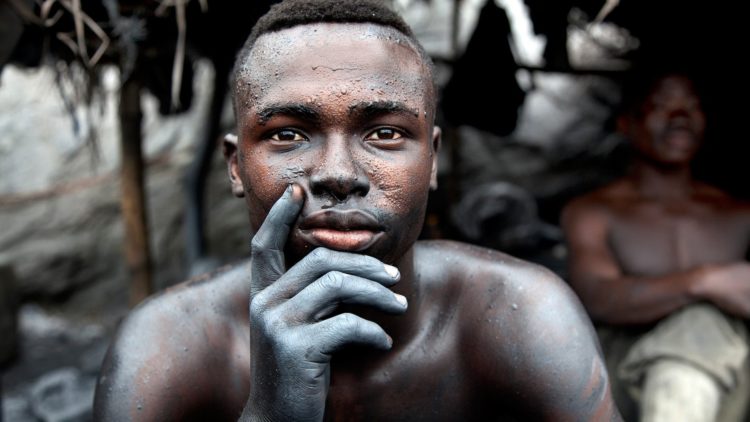Our Inadequate View of Slavery

I believe too many of us in the United States have an inadequate view of slavery – and holding onto this inadequate view comes at a high price for our world and for millions of individuals.
Slavery is an abhorrent practice where one human being physically and psychologically subjugates another human to their will, making them their property, often through terrible abuse.
Most of the time in the United States people think that slavery is something that white people did to black people. While this is true, it is also a damagingly simplistic and inadequate view of slavery. Slavery isn’t just something that white people did to black people but is something that almost all people have done to other people throughout human existence. Every color of human beings made slaves of every other color of human being, including, and sometimes especially, their own color of human beings. In fact, slavery has been so common, that for most of history few people could imagine a world where it didn’t exist. So it isn’t really an exceptional evil that slavery existed in America. Unfortunately it was such a near universal evil that in most times and places throughout human history slavery was normal. The exceptional thing is that slavery doesn’t exist anymore in most of the world today – at least not legally. That is what is unique in human history.
The first slaves in the New World were brown Native Americans, owned by brown Native Americans. When white settlers came, some of them, especially the Spanish, took brown natives as slaves. Then came white slaves – Irish prisoners of war. White slaves taken by white people. Then came black slaves who were bought by white slave merchants from black slave empires in Africa or brown Arab slave traders. From that time till the modern era, the overwhelming number of slaves in North America were black people owned by white people. However, some of these black slaves became free in America and some of these early free black people bought white people as slaves, but more commonly they bought other black people as slaves.
In 1833, after a lifetime of work from a number of white Christian individuals (like William Wilberforce) and Christian societies, the institution of slavery was abolished from the British Empire – the largest empire in the world at the time. Soon pressure was put on its allies and trading partners (mostly white) to follow suit. The British spent (white) blood and treasure hunting down slave ships and stopping slave traders (white, black, and brown people). In fact, the earliest British intrusions into Africa were devoted mainly to stamping out the slave trade. During 1840 alone the British navy intercepted 425 slave ships off the West African coast, hanged the slavers, returned the slaves to Sierra Leon, and set them free (How the West Won, Rodney Stark, p357-358).
In the Unites States both white and black people worked hard and sacrificed a lot in a struggle against white people (and a few black people) to bring slavery to an end. All of these abolitionists worked to free slaves and end slavery out of their Christian convictions or at least a Christian worldview.
Slavery doesn’t legally exist anywhere in the world today where Western powers have a strong enough presence, because Christian people (white, black, and brown), inspired by Jesus uniquely, believed that slavery (regardless of color) both could and should be removed from human society. If not for Jesus’ influence on the human condition we would likely still have legalized slavery today. That is what is unique and noteworthy about slavery in the world today, not some inadequate color-coded view of history and human nature.
The simplistic, color-coded view of slavery limits our ability to diagnose and treat the true causes of slavery – the flaw in our human nature: our capacity for violence, indifference, greed, and our ability dehumanize “the other.” The capacity for such things runs through all of us, regardless of race or color. History is filled with stories of people of every color whom we should aspire to emulate and others who serve as horrifying examples of what humanity is capable of. I believe all of us need to hear and remember both.
Only a proper diagnosis of the root cause of slavery will allow us to understand its place in our past and deal with it in the present – because slavery isn’t over. Just like slavery isn’t just something that white people did to black people, slavery isn’t just something that happened in our past – it is illegal in most of the world, but it isn’t over. If our common narrative on slavery ends in the 1800s, we abandon the millions of people living in the darkness of slavery today. We abandon them to a voiceless oppression.
Today, human beings are enslaved in every country in the world – 46 million of them and growing according to The Global Slavery Index. You can see a distribution map HERE. In Western societies, many of these people exist in the shadows of our societies, living as sex slaves or forced laborers. In non-Western societies, these people are too often used in the supply chain of the products and resources we purchase. These people’s stories are often just as tragic and horrifying as the stories of slaves from our past and they are enslaved for all the same reasons as people have been enslaved throughout human history – our human capacity for violence, indifference, greed, and the ability dehumanize “the other.”
 If these people are to ever be safe and free then our simplistic narrative- that the abhorrent practice of slavery is just something that white people did to black people a long time ago- needs to grow up. Acknowledging that it still exists and that this evil practice isn’t now, and never has been, limited by color, race, or nationality are the first steps in bringing it to an end.
If these people are to ever be safe and free then our simplistic narrative- that the abhorrent practice of slavery is just something that white people did to black people a long time ago- needs to grow up. Acknowledging that it still exists and that this evil practice isn’t now, and never has been, limited by color, race, or nationality are the first steps in bringing it to an end.
To find out more or to become a modern day abolitionist, check out these links:



